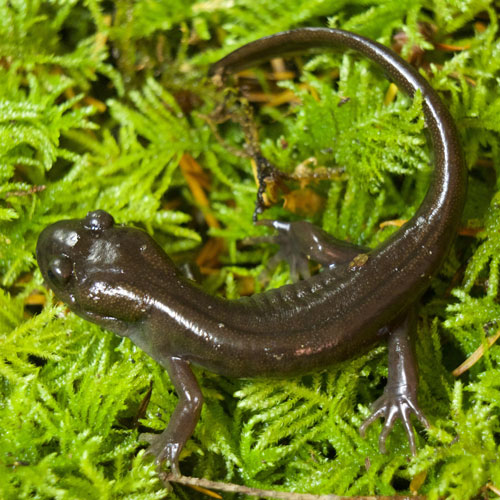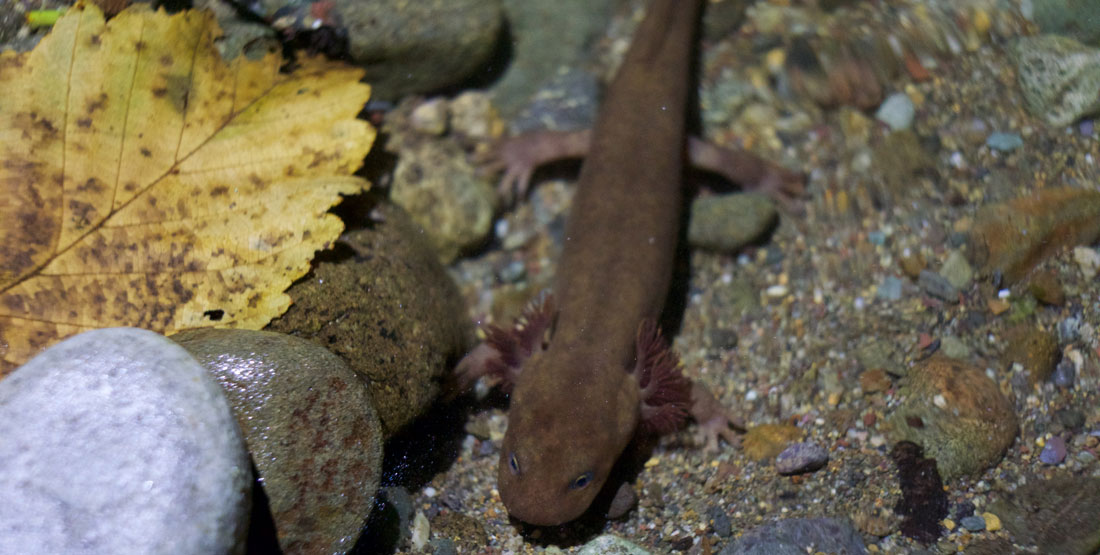Fast Facts
Where they live
- View a map of where they live.
- Cope's Giant Salamanders are only found in the Pacific Northwest. In Washington State they are found in the Olympic and the Cascade Mountains and Willapa Hills of southern Washington
- Prefer clear, cold mountain streams in damp forests.
- They spend most days under rocks in the streams, but move about openly on the stream bottom in the evenings.
Breeding
- Eggs are laid is spring and fall under rocks or logs in streams in hidden spots and are protected by the female.
- Eggs are white and laid one at a time and attached to the wall of the nest site. Eggs can take up to 200 days before hatching.
Cool Biology Facts
- Cope's Giant Salamanders usually mature and reproduce almost entirely in their aquatic form without metamorphosing into terrestrial adults. This is called paedomorphosis or neoteny.
- This happens because most individuals do not respond to the hormones that normally would trigger metamorphosis in other salamanders.
- In lab studies, thyroid treatments have shown to trigger metamorphosis.
Threats
- Main threats include habitat destruction from logging and habitat loss. View their status on the IUCN Red List of Threatened Species.

Amphibians & Reptiles of Washington
Do you know where rattlesnakes live in our state? Or which salamander breathes through its skin? Explore the fascinating diversity of the 26 species of amphibians and 28 reptiles found in Washington state.

